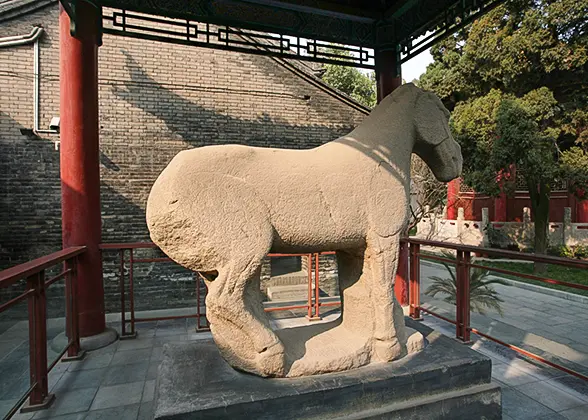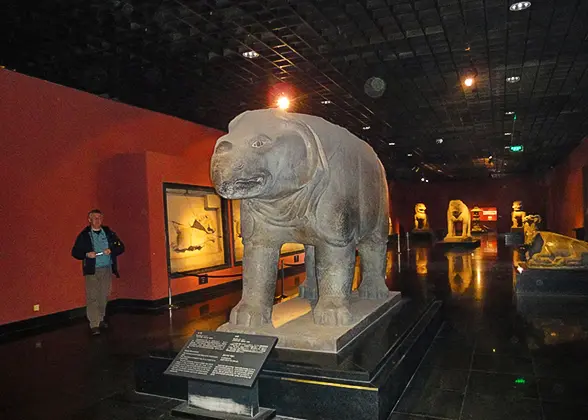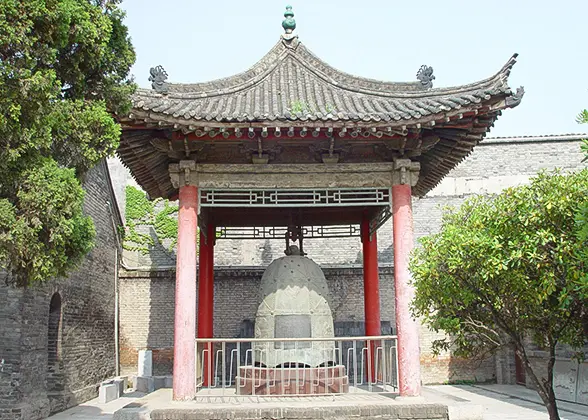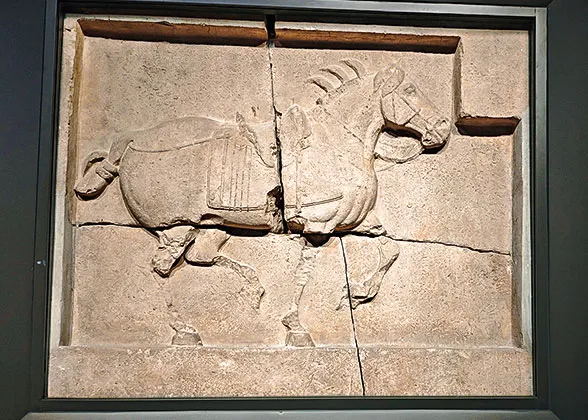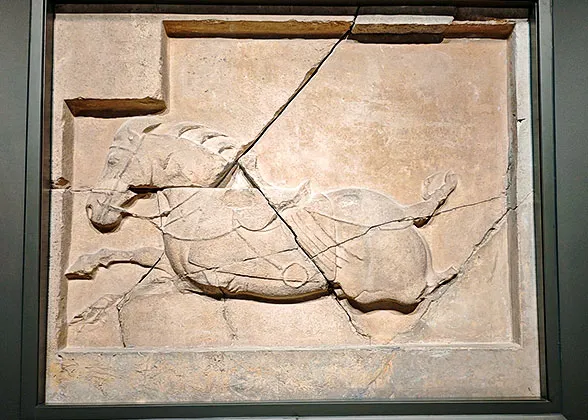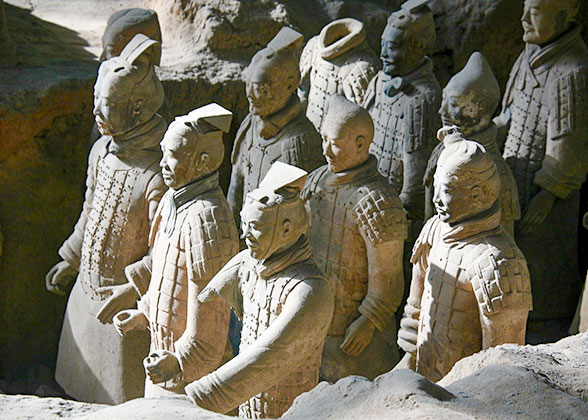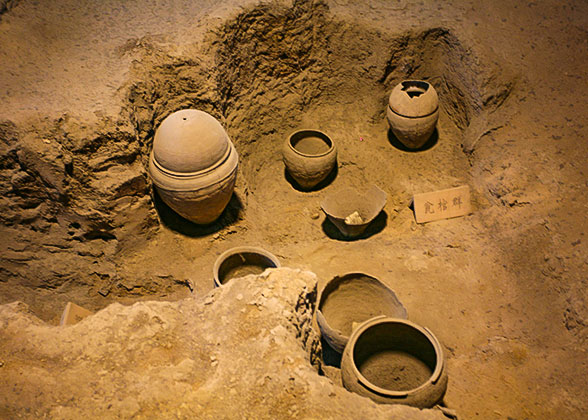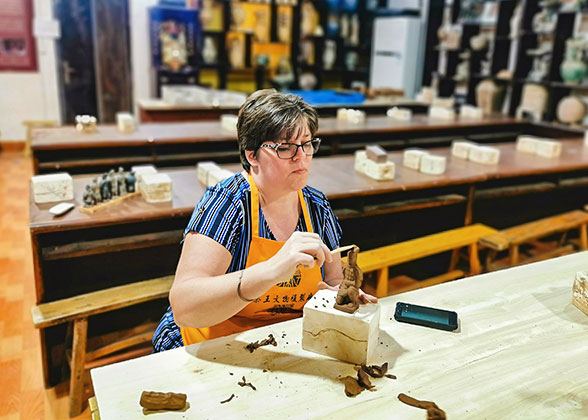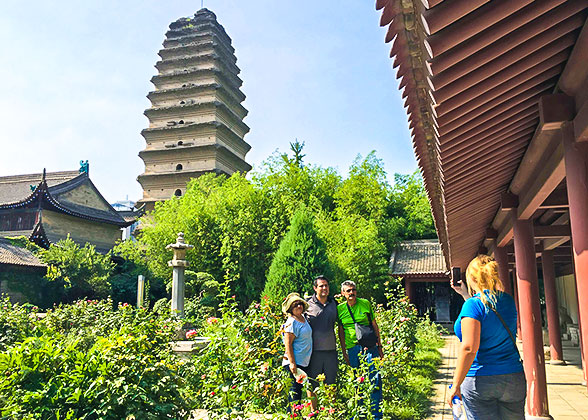The
Stele Forest houses 14,000 relics among which 134 are Chinese national treasures. These can be divided into two categories: the stone steles and the stone sculptures.
Best Stone Steles in Beilin Museum
Stele of Yishan – Representative of Zhuan (Seal Script)
Zhuan became the national standard writing after Qin Shi Huang unified the six states and Stele of Yishan is the representative. The stone stele is said to be written by Li Si, a great counsellor who helped
Qin Shihuang found the first Chinese empire and standardize the writing system and the axle lengths of carts which are truly the base of the centralized power of
Qin (221 – 207 BC). The inscription mainly praises Qin Shihuang’s unification and the benefits brought to the people. In terms of calligraphy, the strokes start and end in a round shape and the corners are all curved. The characters, rectangular in shape, are complicated but symmetrical and balanced in structure.
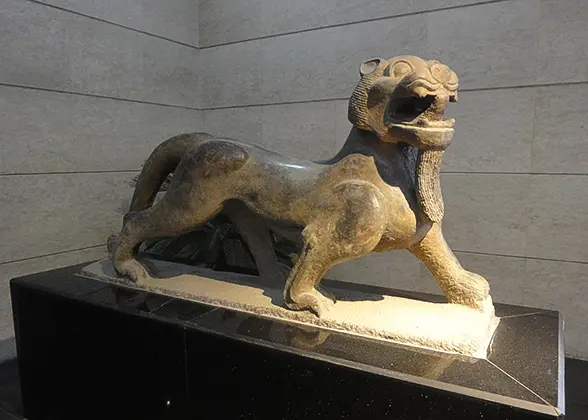 |
| Seal Script |
Stele of Cao Quan - Li (Clerical Script) Calligraphy Representative
Li is an archaic style dominant in the
Han Dynasty (202 BC - 220 AD
) which is much simplified compared to seal script. The Stone Tablet of Cao Quan, an important and precious tablet engraved in the year 185 during the
Eastern Han Dynasty (25 - 220), highlights the representative work of clerical script. This rectangular tablet is carved with the life stories of Cao Quan, an upright and honest official in Heyang County who suppressed a rural uprising and helped the civilians.
The most obvious feature of the elegant characters is that the beginning of horizontal lines is like the head of a silkworm and the finish is like the tail of a wild goose. Evolved from seal script, clerical script changed the round strokes of seal script into square strokes since it’s hard to draw round ones on narrow-shaped bamboo chips used for writing in Qin Dynasty, thus it’s faster than writing by seal script.
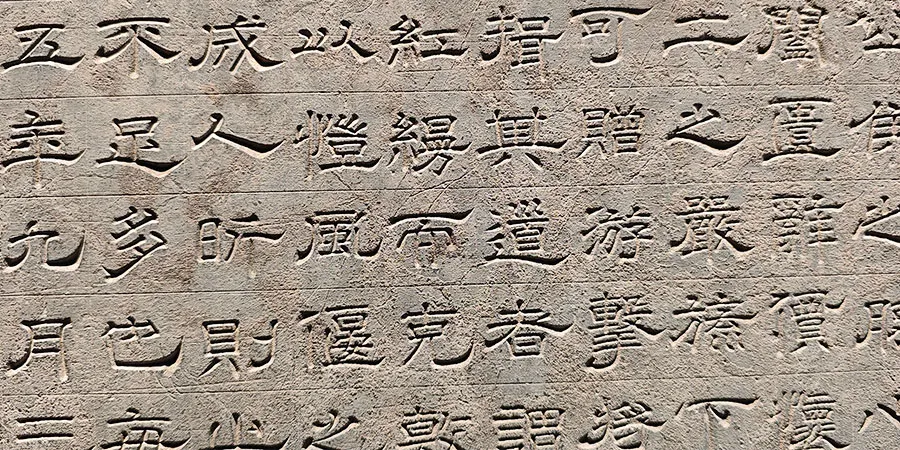 |
| Clerical Script |
Steles Written by Yan Zhenqing & Liu Gongquan - Kai (Regular Script)
Kai (regular script), from which the modern fonts that primary students learn now are derived, is the entry-level script that calligraphers must learn. The most representative figure in regular script is Yan Zhenqing, and half of his most famous calligraphic works are housed in the Beilin Museum. From his early works to his latest works, there are seven works in total. Therefore, the Beilin Museum can be considered a treasure trove of Yan Zhenqing's works. Among them, the most representative one is the Stele of the Abundant Treasure Pagoda written when he was 44, in his early work. The inscription is about the history of the construction of Abundant Treasure Pagoda. The characters are square and regular; the horizontal lines are thin with a small head and large tail and the vertical ones are thick, and many brush strokes are bulging.
The Xuanmi Pagoda Stele is another regular script work having a far-reaching influence. It was written by Liu Gongquan, another eminent calligrapher of the
Tang Dynasty (618 – 907 AD) who gained equal reputation with Yan in regular script. Compared to Yan’s work, his brush strokes are slender with sharp angles just like bones and main strokes are stretched outward, clean and neat.
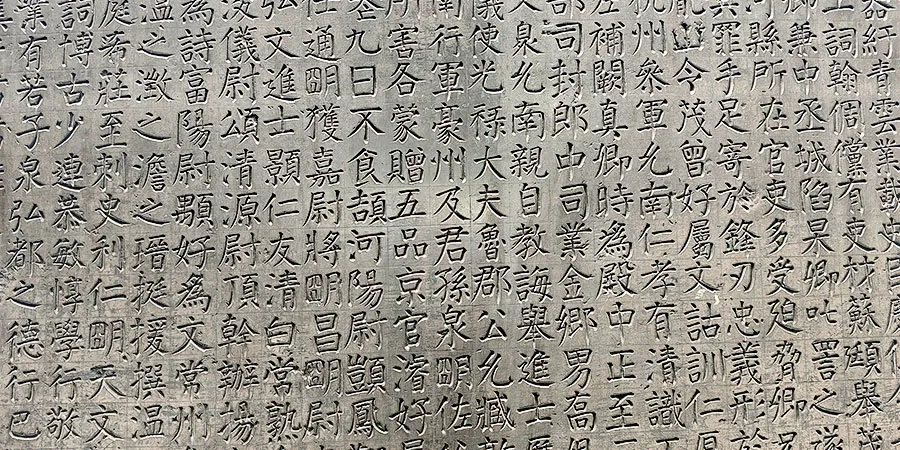 |
| Kai Script of Yan Zhenqing |
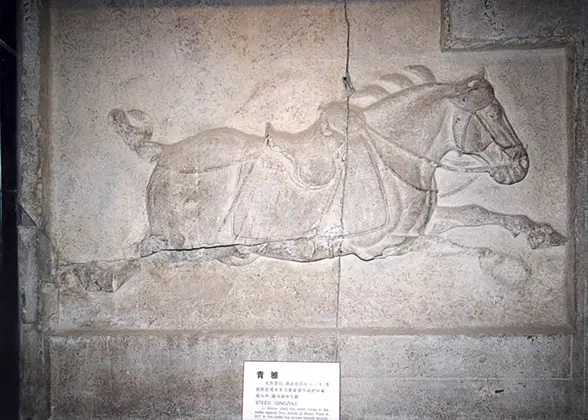 |
| Stele of Preface to Holy Doctrine |
Stele of Preface to Holy Doctrine by Wang Xizhi - Xing (Running Script)
Running script is a script between regular script and cursive script featured with joined-up strokes. It is not as difficult to recognize as cursive script, nor as rigorous and dignified as regular script. Derived from regular script, it is more flexible and changeable and is recognized as the most practical font because of its free-flowing and quick-writing. The complex strokes are often replaced with simple dots, ticks, round and circular strokes while sharp angles are not evident.
The masterwork of running script should be Stele of Preface to Holy Doctrine by Wang Xizhi, the great calligrapher skilled in running script, which is considered the best model to practice running script. The inscriptions are about the responses and praise to Xuanzang’s (an eminent monk and translator in Tang Dynasty) translation of Buddhist scriptures by Li Shimin and Lizhi, the second and third emperor of Tang Dynasty. The characters were compiled by Monk Huairen (another eminent monk in Tang) from surviving works of Wang Xizhi. It is said that Li Shimin once posted a notice throughout the country, offering a high price to purchase Wang Xizhi’s handwriting in folk.
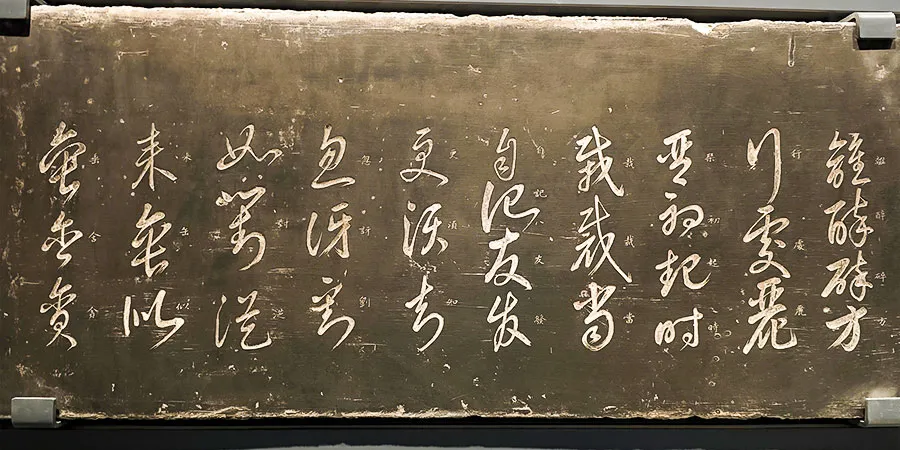 |
| Running Script |
Zhang Xu’s Stomachache Script - Cao (Cursive Script)
Cursive script is not only the most technically difficult style, but the most flexible carrier of emotional expression. It is said that the father-and-son of Wang Xizhi and Wang Xianzhi set the standard of cursive script. But in practice, there is no standard at all but absolute freedom. Sometimes one article is finished just by one stroke with jointed-up lines, dots, ticks and exaggerated circles. The brush is playing with lines and dancing with rise and fall while writing, making the handwriting full of passion and wildness.
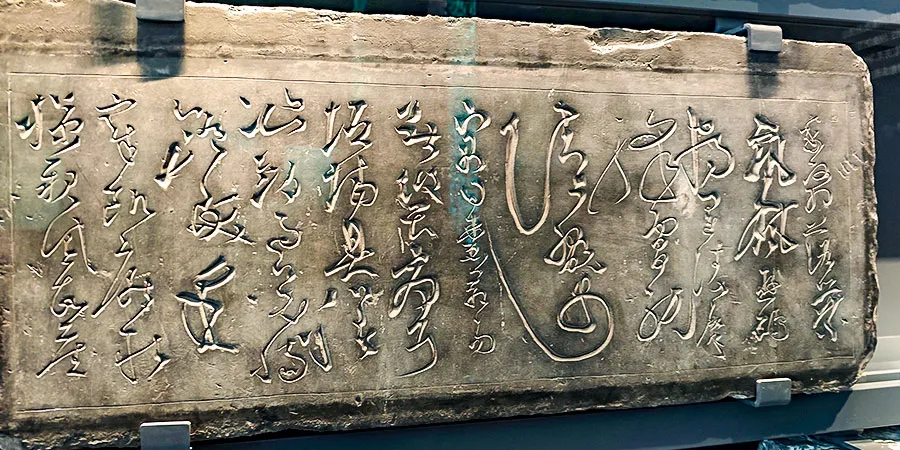 |
| Cursive (Cao) Script of Zhangxu |
The most famous cursive script in the Forest of Steles Museum is Zhang Xu’s Stomachache Script. Zhang Xu once suffered from a sudden stomachache but still insisted on recording his pain. The first few words were neat, but the subsequent ones gradually became distorted and elongated, and finally almost unrecognizable, which truly reflected the increasing pain and showed his overwhelming emotions. Not only that, Zhang Xu was nearly an alcoholic. He always wrote when drunk, even soaked his hair in ink, and went crazy while writing, thus getting his nickname “Zhang the lunatic.”
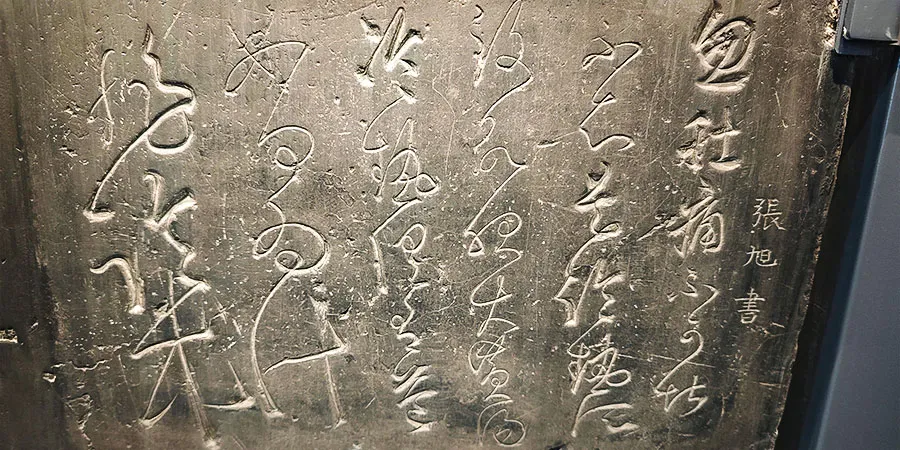 |
| Stomachache Script of Zhang Xu |
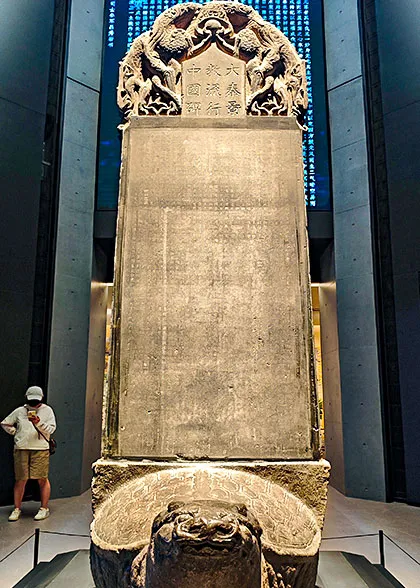 |
| Nestorian Stele |
The Nestorian Stele, displayed at the special exhibition hall themed by Silk Road on B2 of the north museum, tells the initial development of Nestorian Christianity and how Alopen Abraham did his missionary work in China during the Tang dynasty. The contents, carved in both Chinese and Syriac, reflect the international outlook of the Tang dynasty. Engraved in 781, the stele was unearthed in 1625 during the Ming dynasty and moved into the museum in 1907. It is now very important to the study of religions in China.
The engraving for the Kaicheng Classics, located in the first exhibition room, was completed in 837 (Tang Dynasty) and took 7 years. The Kaicheng Classics is a group of stone tablets, which includes twelve intellectual, must-read books of the feudal society such as “The Analects” and “The Book of Changes”. These books were carved on the stones for future generations to study. These stones contain about 650,000 Chinese characters inscribed on 114 stone tablets. They are the only known collection of completely preserved stone books. This group of stone books was originally placed in the Imperial College during the Tang Dynasty and was later moved into the museum during the
Song Dynasty (960 - 1279). Later, during the
Qing Dynasty (1644 - 1911), another stele inscribed with the writings of Mencius stored in the second exhibition room was added, making a total of 13 classics.
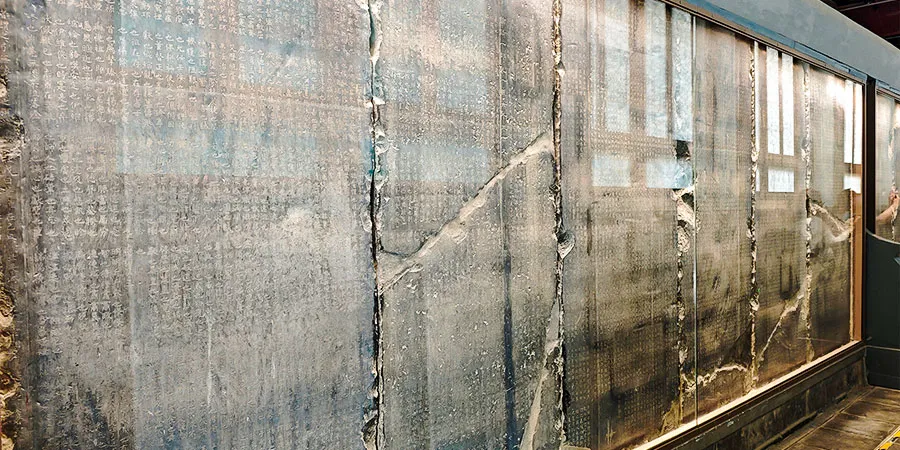 |
| Kaicheng Classics |
Most Famous Stone Sculptures in Beilin Museum
Stone sculptures are usually in form of human beings and animals, often used to guard tombs and in religious sites for worship.
Stone Horse from the Daxia State
The stone horse was carved in 424, Daxia Dynasty (407-431), which was established by the northern minority Huns and lasted only 24 years. Originally placed in front of the tomb of He Liangui, a general from Daxia, the stone horse, inherited the typical style of stone carving art in Han Dynasty, is vigorous and vivid and is the only surviving cultural relic of Daxia.
These six steeds are Tang dynasty reliefs of horses which were discovered in the Zhaoling Mausoleum, the tomb of Li Shimin, the second emperor of Tang Dynasty. These six horses named Quanmaogua, Shifachi, Baitiwu, Telebiao, Qingzhui and Saluzi were precious warhorses of the emperor. Now only Shifachi, Baitiwu, Telebiao and Qingzhui are preserved in the museum. The other two horses are now stored in University of Pennsylvania Museum in the United States. Interestingly you can see arrows on horses’ rumps, which indicates that the warhorses were so brave and charged forward so fast that the arrows could only hit their rumps.
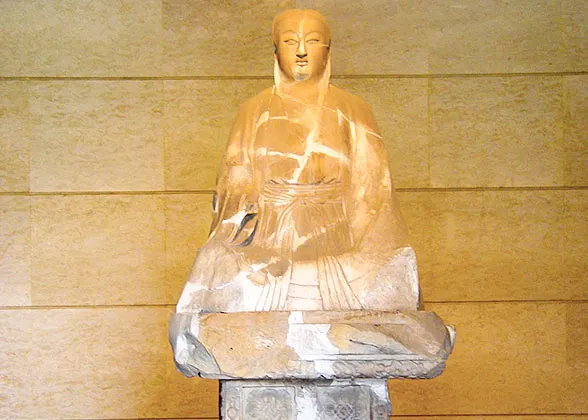 |
| Statue of Laozi |
Statue of Laozi
The only sculpture related to
Taoism in the museum is the Statue of Laozi (the originator of Taoism) located at Mausoleums Stone Sculptures Gallery in the west. The 1.93-meter high white-marble statue was first placed in Huaqing Palace at
Mount Li in northeast Xi'an. Sitting on a three-layer terrace, Laozi looks very kindly. The statue also gives historians valuable clues about how Taoism spread in the central Shaanxi Plain.
Epigraph and Stone Coffin of Li Shou
The epigraph of Li Shou, a general and brother of the first emperor of the Tang Dynasty, was engraved on a stone tortoise with a mythical beast head. It is very rare and only one remained in China. Li Shou’s stone coffin shows the luxury life of the imperial families, which gives present people an idea about ancient people’s attitude towards death and how imperial members lived. Different images such as the gods, dancing girls, attendants and musicians were carved outside and inside the stone coffin.
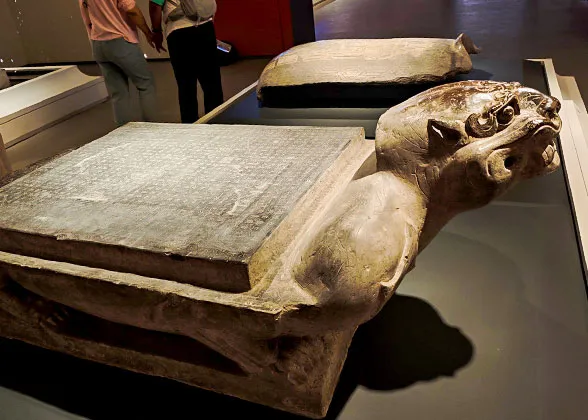 | | Epigraph of Li Shou | | 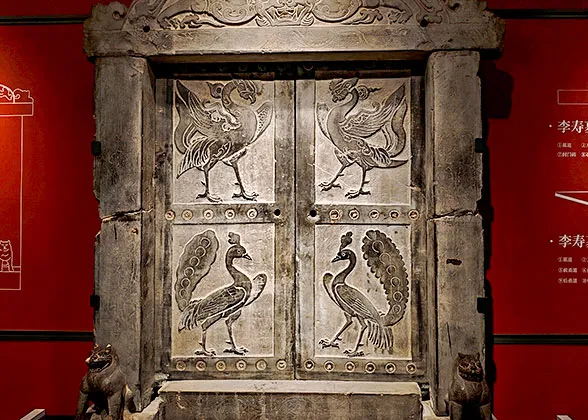 | | Stone Coffin of Li Shou | |
Stone Rhinoceros of Xianling Mausoleum
The Stone Rhinoceros of Xianling Mausoleum, once guarding the tomb of Li Yuan, the founding emperor of Tang Dynasty, is now stored in the west stone sculpture gallery. The stone rhinoceros was carved from a ten-ton bluestone and has a life-like expression on its face.
On the opposite side of the Daxia stone horse stands the Jingyun Bell, cast in the 2nd year of the Jingyun era (711) during the Tang dynasty. The inscriptions, which tell of the mysteries of Taoism and also praise the Bell, were composed by Emperor Ruizong, the fifth emperor of Tang. Jingyun Bell is the only bronze bell in existence of which the inscription was written by an emperor. Although it has a history of more than 1,200 years, the sound is still clear and melodious, demonstrating smelting and casting technology at that time.
- Last updated on Jan. 05, 2026 by Sherry Xia -









